Abstract
The nature of protective immunity against typhoid fever in man is not at present well understood. Work on animal models and earlier studies from this laboratory indicate an important protective role for cellular immunity. The present work attempts to study the efficacy of the conventional typhoid vaccine in inducing specific cellular and humoral immune responses. The study on fifty-eight new army recruits and thirty-one civilian volunteers showed adequate humoral responses after vaccination. However, vaccination failed to induce a significant cellular immune response. In addition, a transient suppression of cellular immunity was observed in the immediate post-vaccination period in ten subjects who possessed natural cellular immunity before vaccination. These findings indicate the need for improving the typhoid vaccine so that it will induce cellular immunity as well as a humoral response. It also points to the necessity for obtaining detailed knowledge of the post-vaccination anergy as it could be important in timing public health programmes.
Full text
PDF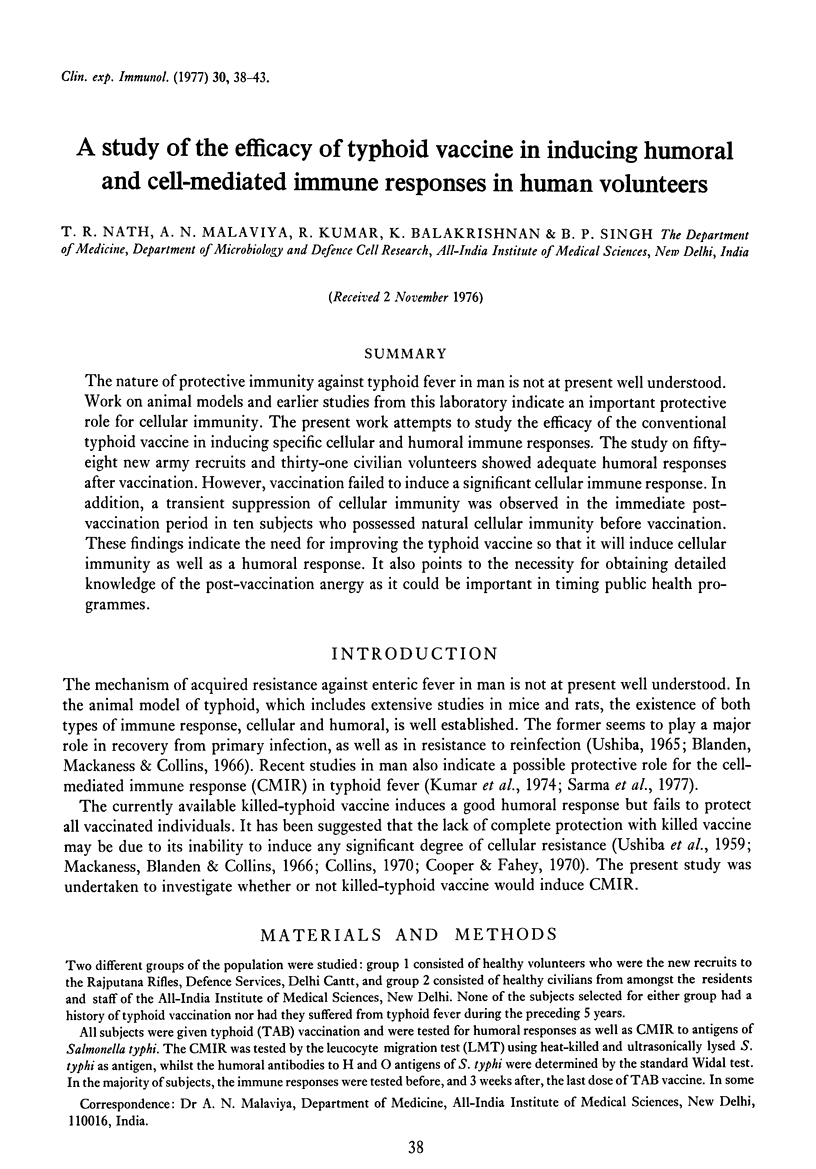
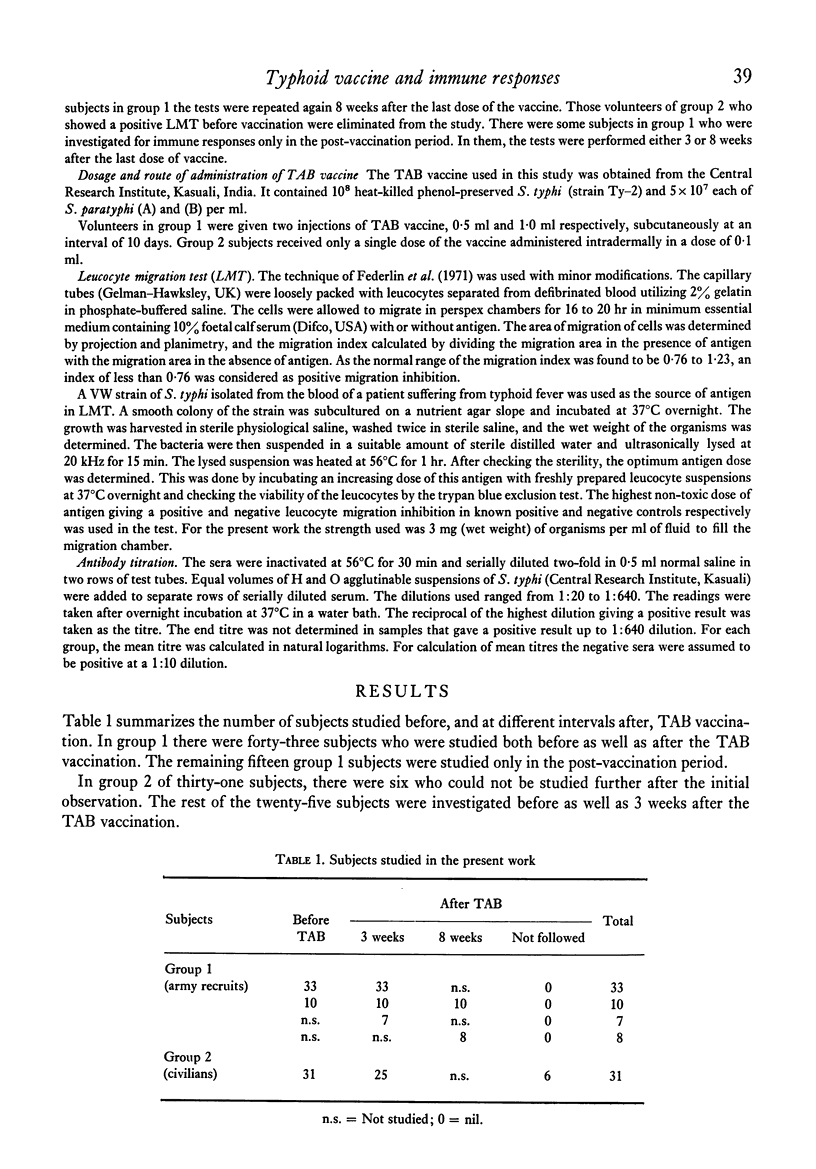
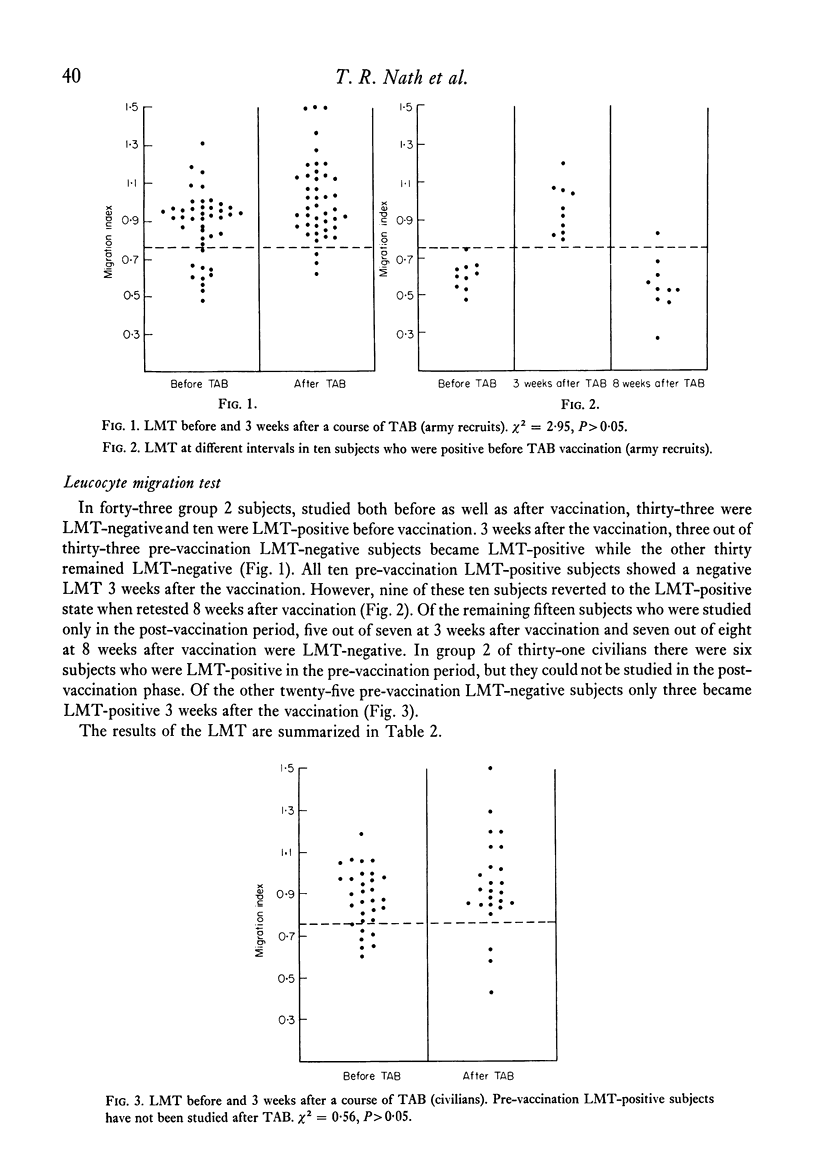
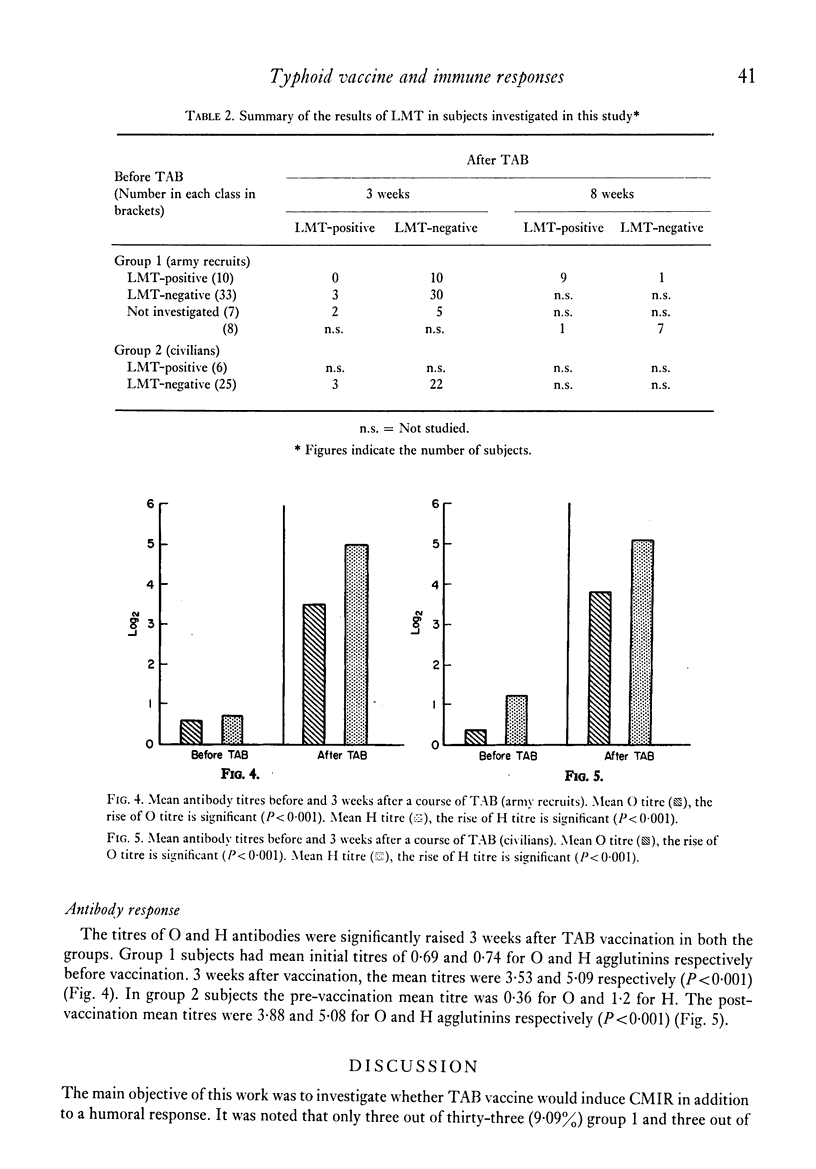
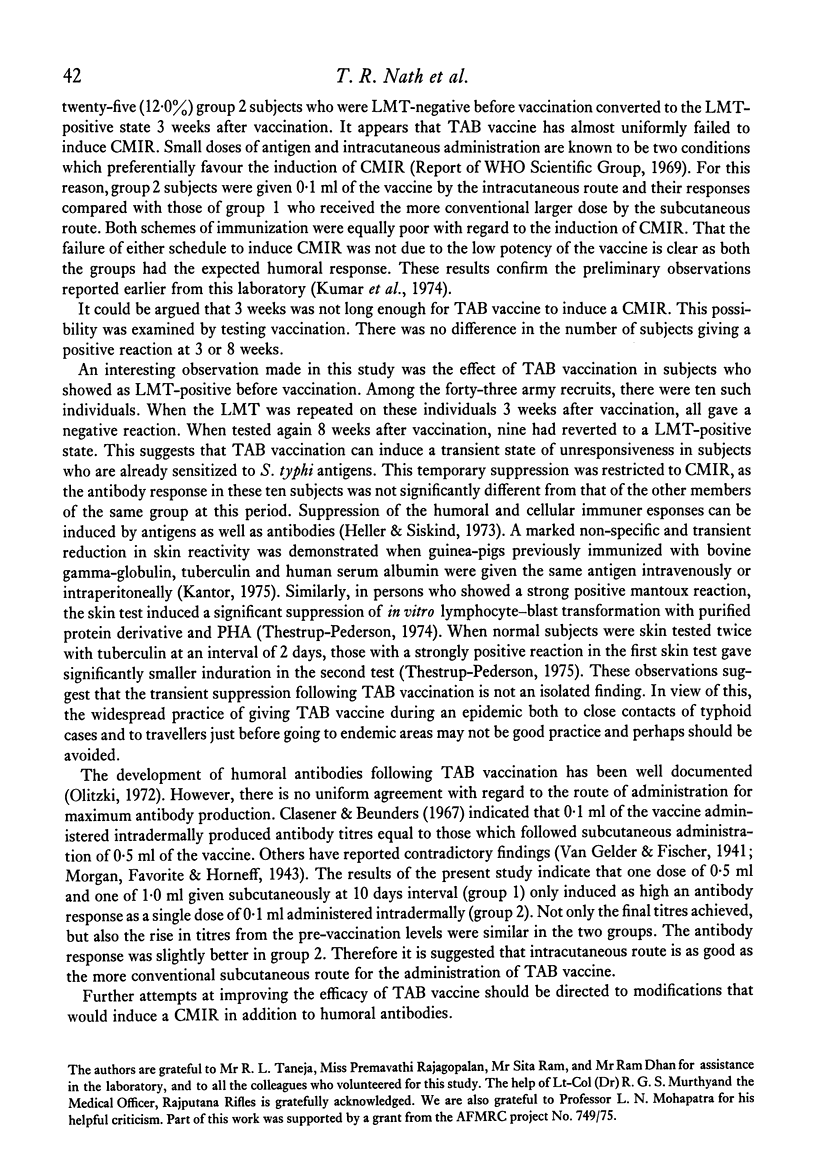
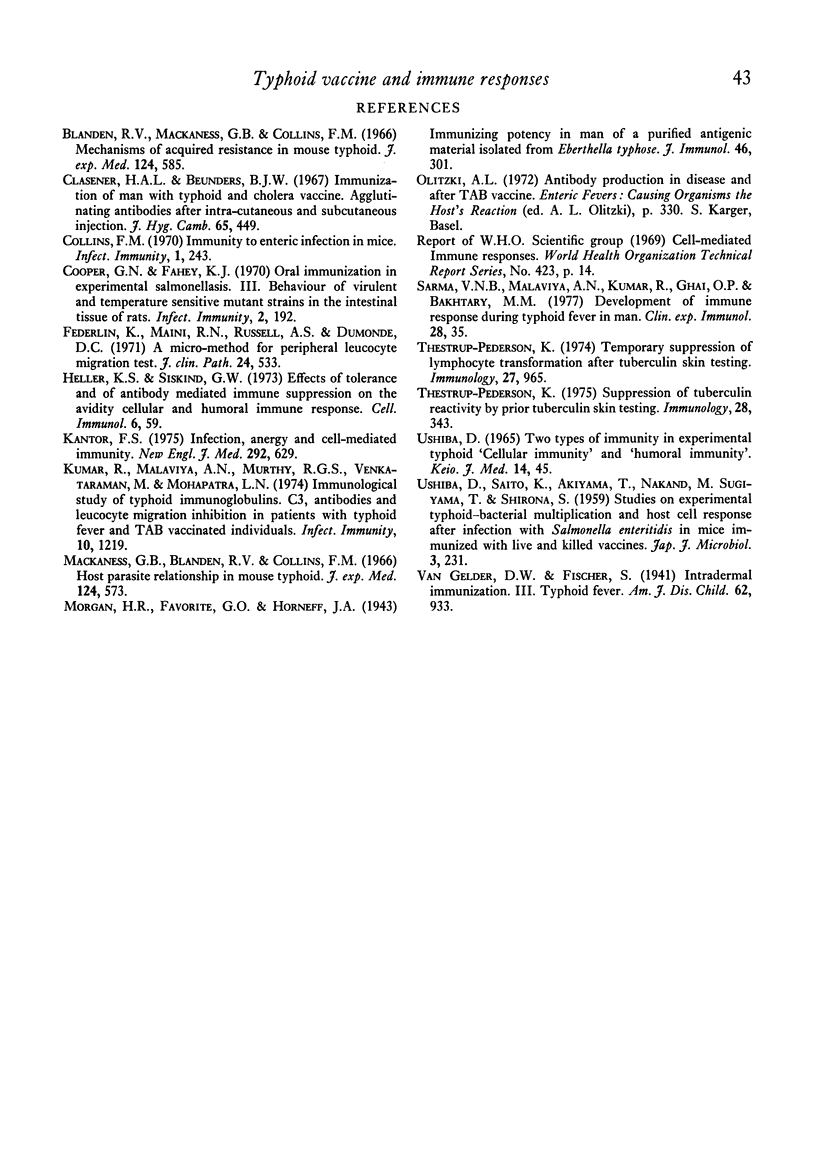
Selected References
These references are in PubMed. This may not be the complete list of references from this article.
- Blanden R. V., Mackaness G. B., Collins F. M. Mechanisms of acquired resistance in mouse typhoid. J Exp Med. 1966 Oct 1;124(4):585–600. doi: 10.1084/jem.124.4.585. [DOI] [PMC free article] [PubMed] [Google Scholar]
- Clasener H. A. Immunization of man with typhoid and cholera vaccine. Agglutinating antibodies after intracutaneous and subcutaneous injection. J Hyg (Lond) 1967 Dec;65(4):449–456. doi: 10.1017/s0022172400045988. [DOI] [PMC free article] [PubMed] [Google Scholar]
- Collins F. M. Immunity to enteric infection in mice. Infect Immun. 1970 Mar;1(3):243–250. doi: 10.1128/iai.1.3.243-250.1970. [DOI] [PMC free article] [PubMed] [Google Scholar]
- Cooper G. N., Fahey K. J. Oral Immunization in Experimental Salmonellosis III. Behavior of Virulent and Temperature-Sensitive Mutant Strains in the Intestinal Tissues of Rats. Infect Immun. 1970 Aug;2(2):192–200. doi: 10.1128/iai.2.2.192-200.1970. [DOI] [PMC free article] [PubMed] [Google Scholar]
- Federlin K., Maini R. N., Russell A. S., Dumonde D. C. A micro-method for peripheral leucocyte migration in tuberculin sensitivity. J Clin Pathol. 1971 Sep;24(6):533–536. doi: 10.1136/jcp.24.6.533. [DOI] [PMC free article] [PubMed] [Google Scholar]
- Heller K. S., Siskind G. W. Effect of tolerance and of antibody mediated immune suppression on the avidity of the cellular and humoral immune response. Cell Immunol. 1973 Jan;6(1):59–65. doi: 10.1016/0008-8749(73)90006-3. [DOI] [PubMed] [Google Scholar]
- Kantor F. S. Infection, anergy and cell-mediated immunity. N Engl J Med. 1975 Mar 20;292(12):629–634. doi: 10.1056/NEJM197503202921210. [DOI] [PubMed] [Google Scholar]
- Kumar R., Malaviya A. N., Murthy R. G., Venkataraman M., Mohapatra L. N. Immunological study of typhoid: immunoglobulins, C3, antibodies, and leukocyte migration inhibition in patients with typhoid fever and TAB-vaccinated individuals. Infect Immun. 1974 Dec;10(6):1219–1225. doi: 10.1128/iai.10.6.1219-1225.1974. [DOI] [PMC free article] [PubMed] [Google Scholar]
- Mackaness G. B., Blanden R. V., Collins F. M. Host-parasite relations in mouse typhoid. J Exp Med. 1966 Oct 1;124(4):573–583. doi: 10.1084/jem.124.4.573. [DOI] [PMC free article] [PubMed] [Google Scholar]
- Sarma V. N., Malaviya A. N., Kumar R., Ghai O. P., Bakhtary M. M. Development of immune response during typhoid fever in man. Clin Exp Immunol. 1977 Apr;28(1):35–39. [PMC free article] [PubMed] [Google Scholar]
- Thestrup-Pedersen K. Suppression of tuberculin skin reactivity by prior tuberculin skin testing. Immunology. 1975 Feb;28(2):343–348. [PMC free article] [PubMed] [Google Scholar]
- Thestrup-Pedersen K. Temporary suppression of lymphocyte transformation after tuberculin skin testing. Immunology. 1974 Dec;27(6):965–971. [PMC free article] [PubMed] [Google Scholar]
- Ushiba D. Two types of immunity in experimental typhoid; "cellular immunity" and "humoral immunity". Keio J Med. 1965 Jun;14(2):45–61. doi: 10.2302/kjm.14.45. [DOI] [PubMed] [Google Scholar]


